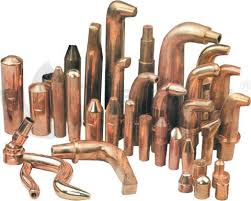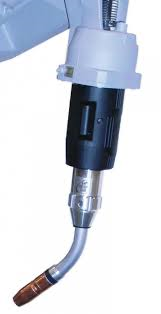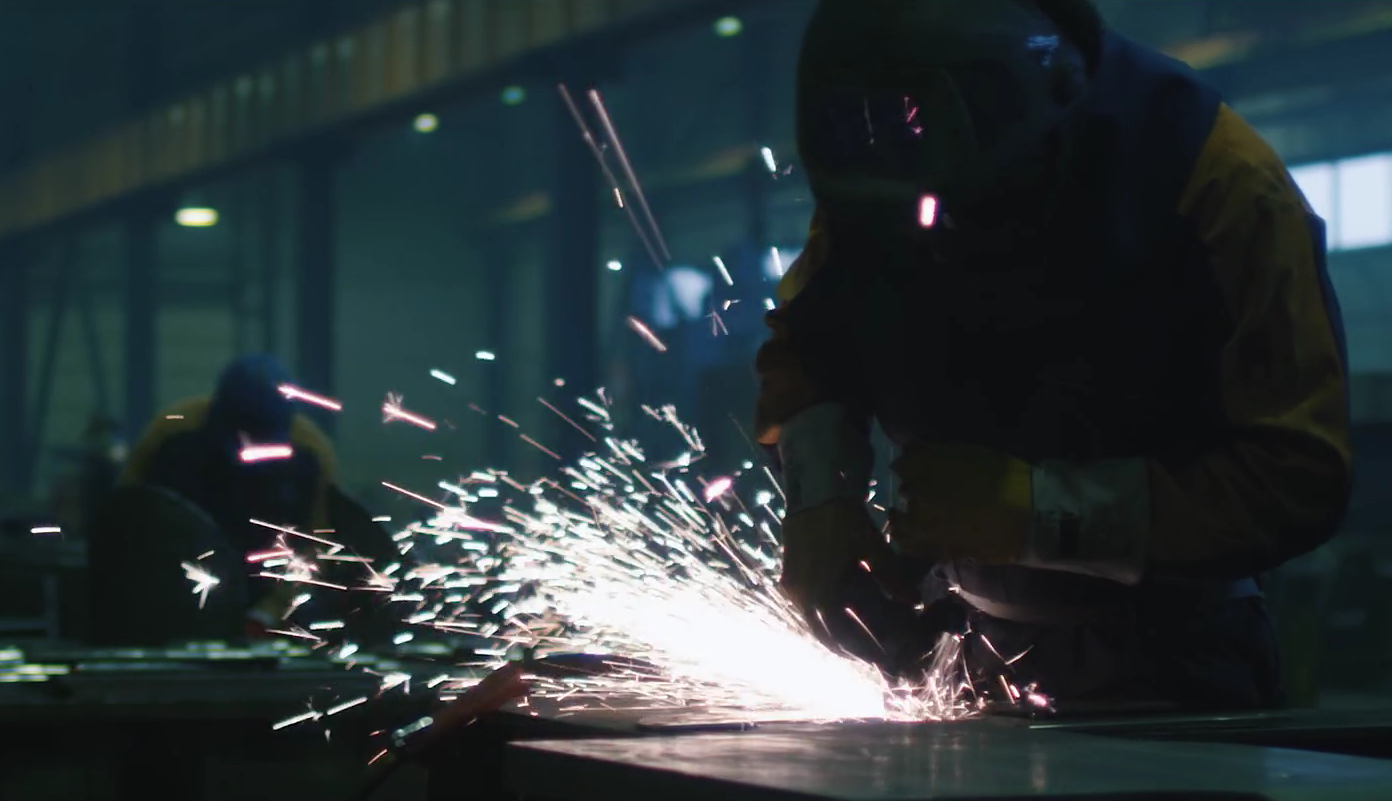Why Consumable Quality is Important for your Welding Robot?
Posted on May 06, 2014 8:00 AM. 4 min read time
An article by Rob Centner on welding consumables first appeared in The Fabricator, a trade journal for the Fabricators & Manufacturers Association (FMA) out of Rockford, Illinois. The FMA is a professional organization, which provides the tools, resources, and a community of companies who work together to improve the metal forming and fabricating industry. Since the subject is pertinent to all welding environments, including robotic welding, I thought we should revisit these important aspects of welding.
There are several important areas to look at when considering welding consumables such as:
- Cost vs quality
- Tolerances

- Contact tips
- Nozzles
- Gas diffusers
Knowing what to look for can help with your decision process.
Cost vs quality
As with all equipment or material purchases cost and quality go hand in hand. There may be important reasons to choose more expensive materials which have a longer working shelf life or better quality output and which result in less downtime and a better quality product.
Tolerances
According to Mr. Centner, “Consumables produced with consistent quality control and precision machining typically hold truer to the desired tolerances.” He cites as an example: “inattention to tolerance that results in a low-quality consumable is when a manufacturer designs a tapered angle in the gas diffuser that differs from the tapered angle of the contact tip. High-quality welding consumables are the result of detailed research and engineering to determine which angles provide the optimal connection and electrical conductivity. Lower-quality consumables typically do not have the same level of research and design behind them, which can lead to contact tips and gas diffusers that do not seat properly together and generate electrical resistance.” You can see how this would lead to premature consumable failure causing more downtime and more frequent consumable replacement which would in the end mean reduced product quality and increased production costs.
Contact Tips
Welding contact tips are used in very difficult environments such as: high temperatures, spatter accumulation, electrical erosion and abrasions, which is why we often consider this the ideal environment for robotic welding cells. This is also why Mr. Centner believes that “The finish of the internal surface of the contact tip's bore is an important consideration. The welding current transfers at discrete contact points along this bore, so the presence of a rough surface can degrade electrical transfer, promote hesitation in the wire feeding, and may result in excessive spatter accumulation.” He suggests that you “Look for contact tips that have undergone rigorous quality control to eliminate these types of defects.” to avoid erratic welding, wire wandering, and arc instability, all of which can contribute to downtime and quality problems.
Another aspect to consider is the natural 'wear and tear' of the contact tips or keyholing, which can increase splatter and require an extra step of grinding to bring the piece up to quality standards. This of course add time to your production and increases the cost. To avoid this you might be able to use threadless contact tips that can be adjusted to get a fresh surface if the tip starts to keyhole. This can help extend the life of the contact tip and reduce downtime for tip changeover.
Having the right sized contact tips is important, as having one with a bore hole that is too large can lead to burnbacks and poor arc starts, so these should be avoided. As well as having contact tips that have been degreased, deburred and washed properly to remove any production shavings, as a tip with oil or small burrs on it can produce poor arc starts and contaminate the weld.
Nozzles
If your machine uses gas for shielding it is important that the nozzle's surface contour and geometry provide proper laminar flow and optimal coverage. Nozzles also used in extreme welding environments can be susceptible to spatter buildup which can block shielding gas flow and lead to weld defects. Spatter tends to stick to rough surfaces, so if the inside surface of the gas nozzle is smooth, then it is less likely that spatter will stick to it. The high temperatures often cause build up at the tip of the nozzle, but Mr. Centner notes that “A manufacturing process that uses higher amounts of cold work, harder alloys, and/or corrosion-resistant alloys helps delay nozzle deterioration, leading to longer consumable life. Lower-quality nozzles may be more prone to defects in the raw materials used in their manufacture, which can contribute to faster deterioration and shorter consumable life.”
Gas Diffusers
Gas diffusers are used to transfer the shielding gas from the core tube to the nozzle chamber, so having a smooth nozzle is also important here. Having a contact tip and diffuser which fit together well will lower the electrical resistance and excess heat generation that can shorten the life span of the consumable products. So it is important to look at how well these parts fit together. To check this you should look for good tolerances on the threaded connections and watch out for diffusers that are not symmetrical, as this can affect the weld quality.
Short term gain vs long term payoff
When looking at your bottom line, the critical point of Mr. Centner's article concentrated on the fact that “While a low-quality consumable may offer significant cost savings at the time of purchase, potential downtime and related costs are outcomes to consider. Consumables are an ongoing expense throughout the welding process, so those that offer high quality and long life can offer significant payoff over time.”
This reminds us, it is important to look at more than just price in your contact tips, nozzles, and gas diffusers to determine which offers the best tolerances and performance over the long haul.








Leave a comment